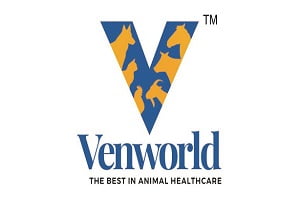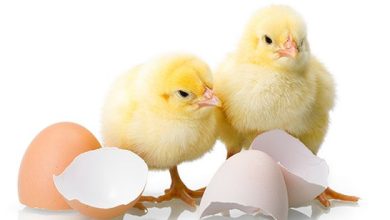POULTRY PROCESSING AND VALUE ADDITION

Asif H Sofi; Sheikh Rafeh Ahmad;
Heena Jalal, Tahir Nazir and Nazir A Bumla
Division of Livestock Products Technology
Faculty of Veterinary Sciences and Animal Husbandry
Sher-e-Kashmir University of Agricultural Sciences and Technology of Kashmir
Poultry industry in India is a well established industry, ranked third in egg production (75 billion) and fifth (4.20 million tons) in broiler meat production in the world. The industry contributes 5% and 2.5 % of meat and egg of total global output, respectively. In India, the per capita consumption of egg and poultry meat is 61 eggs and 3.9 Kg of meat, respectively. The consumption pattern is not uniform between urban and rural areas with higher consumption in urban areas. The reasons attributed for more consumption could be more urbanization, improved income, better knowledge on health and nutritional benefits of poultry meat. Although the poultry production is constantly showing an increasing trend, but the processing industry has not maintained the same pace leading to overall moderate profitability. In India, only 20% of the chicken and 6% of the eggs are processed. Among the dressed chickens, 70% are sold as dressed or chilled or frozen whole carcass, while remaining 30% as cut up parts and further processed products (Singh 2012). Major constraints in our country for lack of processing is less preference for frozen chicken by the consumer, insufficient cold chain infrastructure facilities, lack of well organized marketing system, less domestic demand for value-added products, non-availability of adequate technology, fluctuating export trade, high import duty and strict sanitary and phytosanitory norms by importing countries (Desikan and Megarajan, 2014).
Processing and marketing of poultry ranges from live bird markets or a very primitive on-site slaughter and sale to a highly sophisticated, fully automated and International Standards Organization (ISO) certified facilities and ready-to-eat convenience products in many parts of the world. Lack of or inadequate refrigeration is probably the single largest obstacle to the marketing of many perishable foods, including meat and poultry. In many developing countries, even the subtle improvements in the cold storage capabilities have significantly increased the trade, storage, distribution, and consumption of poultry products (Babji, 2001). The adoption of modern freezing, packaging, and transportation technologies has provided large poultry companies the flexibility to export their high quality, mostly value-added premium cuts to all corners of the world, especially at times of domestic surpluses and low market demands (Bilgili, 2001).
The poultry processing is broadly divided into pre-processing, primary processing, secondary processing and further processing.
Pre-processing
Prior to processing, several steps are taken to prepare the live birds for processing. First the feed is removed from broilers approximately 8-12 hr before slaughter. Feed withdrawal is important to reduce gastrointestinal contents within the bird, which reduces the chance of ingesta or fecal contamination during processing. The poultry house is cleared of equipment prior to arrival of the catching crew. The birds are loaded into multilevel coops. These coops are loaded onto trucks and transported to the processing plant. Upon arrival, the birds are weighed as a group and held in a holding shed to provide some minimal protection from the environment prior to unloading. The loading, unloading as well as transportation of poultry birds should preferably be done during colder hours of the day. Upon arrival, the ante-mortem examination of poultry birds is done to pass judgment about the suitability of slaughtering them for further processing.
Primary Processing
Primary processing includes slaughter, evisceration and chilling. In the modern and automated poultry processing plants, the coops are unloaded from the truck and a machine tilts and dumps the entire coop onto a conveyor that transports the birds to the hanging area. The birds are hung upside down on the overhead shackles where they remain for the duration of steps in the slaughter area, (approximately 6-7 min total). The birds are stunned using electrical stunning device (water troughs), passing a current of 10-20 mA through the head and body. Immediately after stunning, the birds are slaughtered either manually or mechanically using automated kill machine. After the neck is cut, exsanguination (i.e. bleeding) takes approximately 2 min. It is followed by scalding where the birds are submerged in hot water which assists in feather removal. In a small plant, scalding can be performed manually in a large bucket. i.e., placing the carcasses in and removing them from a tank. In large plants, it is done in a continuous manner employing a single stage or multistage scalding bath while the birds are suspended from a moving shackle line. Feathers are being plucked either manually or using a defeathering equipment. The defeathering equipment is equipped with rubber fingers that rub the feathers off the carcass. After feather removal, the heads, oil glands, crop and feet are removed. On-farm and small processors usually cut the head off while large plants have machines that pull heads off so that the esophagus is also removed. The feet are removed at the knee joint. In small plants, birds are put on evisceration shackles after scalding and picking. In large plants, after the feet are removed, the birds are rehung on the shackles. When birds are first hung, it is easiest to hang them by the feet, but during rehanging, they are hung by the knee joint. This is followed by evisceration stage which involves removal of the contents of the body cavity. The body cavity can be opened by making a small cut near the vent, extending the cut around the vent. After the abdomen is open, the viscera can be removed through the opening. It is very important to remove all the viscera, including the lungs that are attached to the back. After all the contents of the cavity are removed, the bird is thoroughly washed inside and out. The edible byproducts including heart, liver, and gizzard (collectively called giblets) should be separated and cleaned. After dressing, the carcass is cooled as soon as possible. The most common methods of chilling include water-immersion chilling, air chilling and spray chilling.
Secondary Processing
Secondary processing usually refers to further processing of the raw carcass into value-added product forms. Cut-ups, deboning and portioning are included in secondary processing. There are different ways to cut up a poultry carcass. Depending on market demand, poultry can be sold as a whole, ready-to-cook bird, split into two halves, separated into different parts (wings, legs, breasts) and sold with/without skin and bones (e.g., boneless breast). In high volume markets, a large percentage of carcasses are cut into portions for retail sale, for use in restaurants and catering outlets and as a raw material for an increasingly wide range of fast-food products. In low throughput plants, carcasses can still be cut manually. In most medium and high throughput plants, birds are cut automatically by modular systems able to operate at hourly throughputs of 5000 carcasses or more. The cut-up-parts of poultry (usually 8 in number) include breast, back, legs (2 thighs and 2 drumsticks) and 2 wings. Deboning means separating meat from bones. Mostly, deboned meat is from breasts (fillets and tenders), with some thigh meat also available to the retail market. Portioning is conducted on deboned meat, usually breast fillets. Portioning is important to supply meat at a certain weight, length, width, and thickness. Although it does not seem important other than for marketing, fast food retail operators rely on portion-controlled meats as a food safety method. For example, a breaded fillet of a certain size is placed in a fryer with a set temperature and a timer set for 3.5 min; an overweight or overly thick portion may not reach a safe internal temperature with the programmed settings.
Further Processing
Further processing is the addition of ingredients, and/or heat treatment to poultry meat to create a variety of value added products. Poultry industries involved with the processing have developed hundreds of processed products. Some processed forms include marinated, chopped and formed, breaded, glazed, oven roasted, fried and char-grilled varieties. Major product forms include patties (breaded or roasted), nuggets, tenders, fillets, wings, drums, and thighs, prepared and either par-fried (partially cooked in oil for less than a minute) or cooked in many different possible forms.
Conclusion
Indian Poultry Industry is one of the fast growing markets in meat production. Although poultry production industry shows enormous growth, but the processing sector has not maintained same pace. Marketing of poultry products has many hurdles such as unstable market, increased taxes on processed foods, high transportation charges, and lack of cold chain facilities and non-compliance of food safety norms. However, continuous research has lead to the development of low cost and efficient poultry processing technologies. Rapid urbanization, industrialization, improved income and changing food habits can be seen as positive factors for development of processed food sector including poultry processing sector. Value added poultry meat products are in vogue because of them providing increasing convenience to consumers through decreasing preparation time, minimizing preparation steps, allowing use of specific parts, taking risks out of kitchen and increasing value of product. With the advent of further processing and availability of new products, meat consumption, particularly poultry consumption has potential to upgrade the poultry industry all over the world and particularly in developing countries like India. However, need of the time is to maintain the strict quality assurance norms as per the standard guidelines to further the marketing and consumption pattern of value added poultry meat products.
References
Babji, A. S., 2001. Asian poultry processing adjusts to domestic market demands. World Poultry-Elsevier, 17, 22-24.
Singh, R.P., 2012. Present status and prospects of egg and poultry processing in India, IPSACON, pg. 111-115.
Desikan Thyagarajan and Megarajan Barathi 2014. Prospects of Value-Added Poultry Products Marketing in India. Animal and Veterinary Sciences. Vol. 2, No. 4, pp. 118-123.
Biligili, S.F., 2001. Poultry Products and Processing in the International Market Place. Proceedings of the 54th Reciprocal Meat Conference. American Meat science Association. 40-43.


